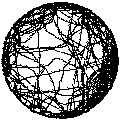SEE: path analysis for replicability
Exploratory data analysis software for spatial behavior tests.
SEE provides unique analysis of tracked locomotor paths in animals, based on intrinsic properties of behavior such as home base and movement segmentation. Robust algorithms and tailored thresholds for each individual animal enhance the replicability and generalizability of the phenotyping analysis (read more).
SEE is currently developed for two environments, intended for different types of users, from grad students and technicians working in behavioral phenotyping of lab animals to researchers interested in advanced development and study of behavior.

SEE-Workshop
A stand-alone application for Windows environment, intended for simple and robust calculations of path measures from exported tracking data.

R-SEE
New functions and scripts in the open R environment, intended for development of advanced statistical analysis for replicability across laboratories.
Analysis Example - Subtypes of incursions Lipkind et al, 2004


Top - visualization of a tracked path of a C57BL/6J mouse in a 30 minutes session in an open field test:
Bottom, left to right - visualization of progression segments, calculated by SEE. (1) near-wall progression segments, (2) to (4) incursions towards the arena center (three components of distance from wall).
Supported by European Research Council under the uropean Community’s Seventh Framework Programme, ERC grant 294519 (PSARPS)